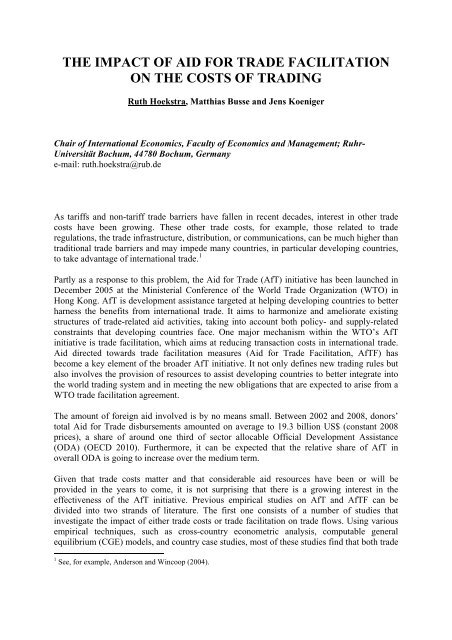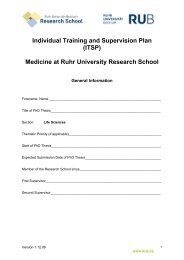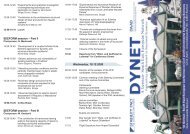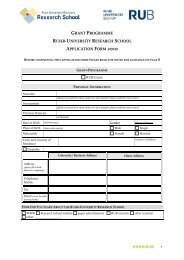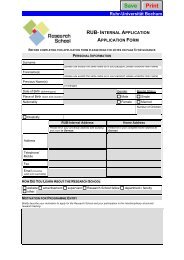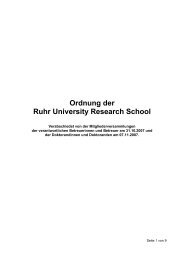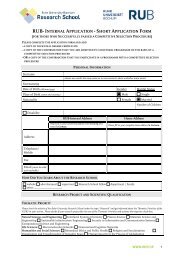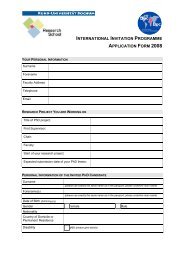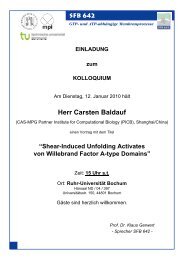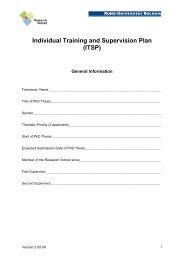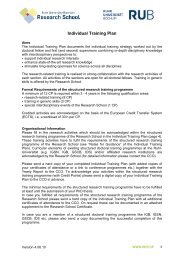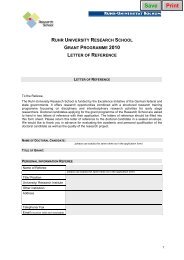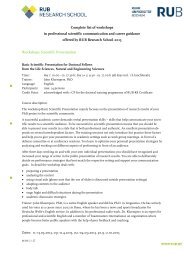Section Days abstract book 2010.indd - RUB Research School ...
Section Days abstract book 2010.indd - RUB Research School ...
Section Days abstract book 2010.indd - RUB Research School ...
You also want an ePaper? Increase the reach of your titles
YUMPU automatically turns print PDFs into web optimized ePapers that Google loves.
THE IMPACT OF AID FOR TRADE FACILITATION<br />
ON THE COSTS OF TRADING<br />
Ruth Hoekstra, Matthias Busse and Jens Koeniger<br />
Chair of International Economics, Faculty of Economics and Management; Ruhr-<br />
Universität Bochum, 44780 Bochum, Germany<br />
e-mail: ruth.hoekstra@rub.de<br />
As tariffs and non-tariff trade barriers have fallen in recent decades, interest in other trade<br />
costs have been growing. These other trade costs, for example, those related to trade<br />
regulations, the trade infrastructure, distribution, or communications, can be much higher than<br />
traditional trade barriers and may impede many countries, in particular developing countries,<br />
to take advantage of international trade. 1<br />
Partly as a response to this problem, the Aid for Trade (AfT) initiative has been launched in<br />
December 2005 at the Ministerial Conference of the World Trade Organization (WTO) in<br />
Hong Kong. AfT is development assistance targeted at helping developing countries to better<br />
harness the benefits from international trade. It aims to harmonize and ameliorate existing<br />
structures of trade-related aid activities, taking into account both policy- and supply-related<br />
constraints that developing countries face. One major mechanism within the WTO’s AfT<br />
initiative is trade facilitation, which aims at reducing transaction costs in international trade.<br />
Aid directed towards trade facilitation measures (Aid for Trade Facilitation, AfTF) has<br />
become a key element of the broader AfT initiative. It not only defines new trading rules but<br />
also involves the provision of resources to assist developing countries to better integrate into<br />
the world trading system and in meeting the new obligations that are expected to arise from a<br />
WTO trade facilitation agreement.<br />
The amount of foreign aid involved is by no means small. Between 2002 and 2008, donors’<br />
total Aid for Trade disbursements amounted on average to 19.3 billion US$ (constant 2008<br />
prices), a share of around one third of sector allocable Official Development Assistance<br />
(ODA) (OECD 2010). Furthermore, it can be expected that the relative share of AfT in<br />
overall ODA is going to increase over the medium term.<br />
Given that trade costs matter and that considerable aid resources have been or will be<br />
provided in the years to come, it is not surprising that there is a growing interest in the<br />
effectiveness of the AfT initiative. Previous empirical studies on AfT and AfTF can be<br />
divided into two strands of literature. The first one consists of a number of studies that<br />
investigate the impact of either trade costs or trade facilitation on trade flows. Using various<br />
empirical techniques, such as cross-country econometric analysis, computable general<br />
equilibrium (CGE) models, and country case studies, most of these studies find that both trade<br />
1 See, for example, Anderson and Wincoop (2004).


